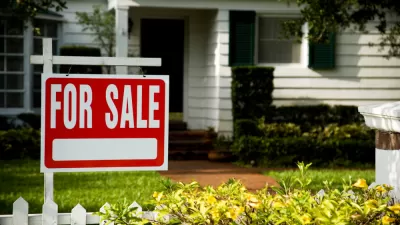Research shows that homes in communities of color are consistently undervalued by, in some cases, over $1 million.

The racial gap in home appraisals is present and growing in every major U.S. city, with homes in predominantly white neighborhoods appraised at almost triple the values of homes in neighborhoods made up of people of color, report Brentin Mock and Marie Patino for Bloomberg CityLab.
According to new research from University of Illinois Chicago sociologist Junia Howell that seeks to isolate racial factors in home appraisals, “These disparities stem from a number of causes, including historic discriminatory practices and the modern appraisal approaches that perpetuate them. But they can also reflect prejudices on the part of appraisers.”
In expensive cities like San Francisco and New York, the difference in average appraisals topped $1 million, signaling a huge loss of potential wealth-building opportunities for Black and brown families. “In other less-expensive metro areas like Charleston, South Carolina, the dollar differences were lower, but the disparity was even worse.”
The industry is starting to acknowledge the problem. “In 2021, the Federal Home Loan Mortgage Corporation released a study that found that housing appraisal discrimination is ‘pervasive’ throughout the industry. The conversation now among federal authorities and appraisal professionals is how to craft reforms to root it out.”
FULL STORY: Racial Disparities in Home Appraisals Exist in Every Major US City

Study: Maui’s Plan to Convert Vacation Rentals to Long-Term Housing Could Cause Nearly $1 Billion Economic Loss
The plan would reduce visitor accommodation by 25,% resulting in 1,900 jobs lost.

North Texas Transit Leaders Tout Benefits of TOD for Growing Region
At a summit focused on transit-oriented development, policymakers discussed how North Texas’ expanded light rail system can serve as a tool for economic growth.

Why Should We Subsidize Public Transportation?
Many public transit agencies face financial stress due to rising costs, declining fare revenue, and declining subsidies. Transit advocates must provide a strong business case for increasing public transit funding.

How to Make US Trains Faster
Changes to boarding platforms and a switch to electric trains could improve U.S. passenger rail service without the added cost of high-speed rail.

Columbia’s Revitalized ‘Loop’ Is a Hub for Local Entrepreneurs
A focus on small businesses is helping a commercial corridor in Columbia, Missouri thrive.

Invasive Insect Threatens Minnesota’s Ash Forests
The Emerald Ash Borer is a rapidly spreading invasive pest threatening Minnesota’s ash trees, and homeowners are encouraged to plant diverse replacement species, avoid moving ash firewood, and monitor for signs of infestation.
Urban Design for Planners 1: Software Tools
This six-course series explores essential urban design concepts using open source software and equips planners with the tools they need to participate fully in the urban design process.
Planning for Universal Design
Learn the tools for implementing Universal Design in planning regulations.
City of Santa Clarita
Ascent Environmental
Institute for Housing and Urban Development Studies (IHS)
City of Grandview
Harvard GSD Executive Education
Toledo-Lucas County Plan Commissions
Salt Lake City
NYU Wagner Graduate School of Public Service





























